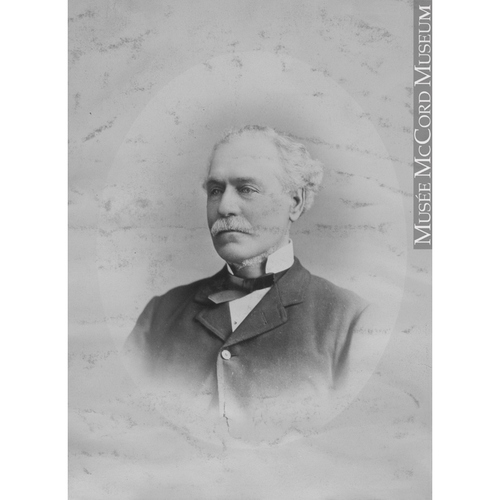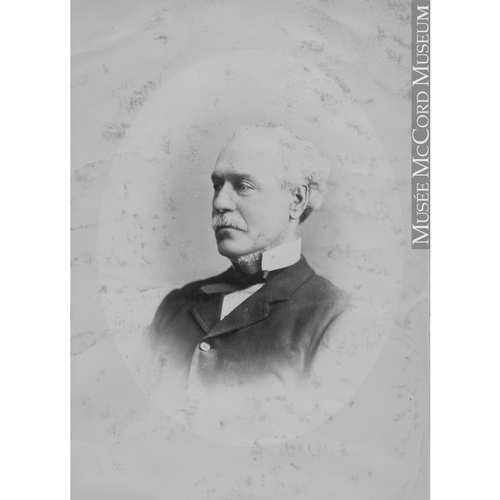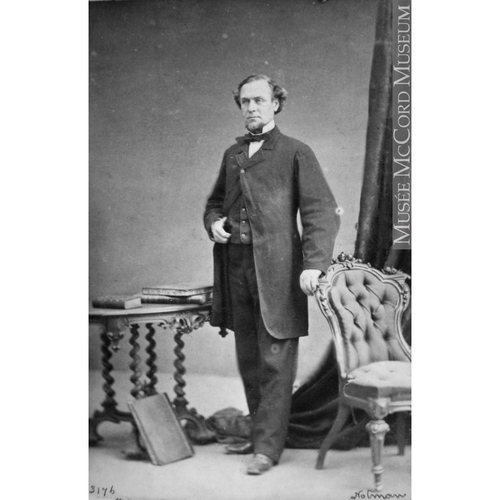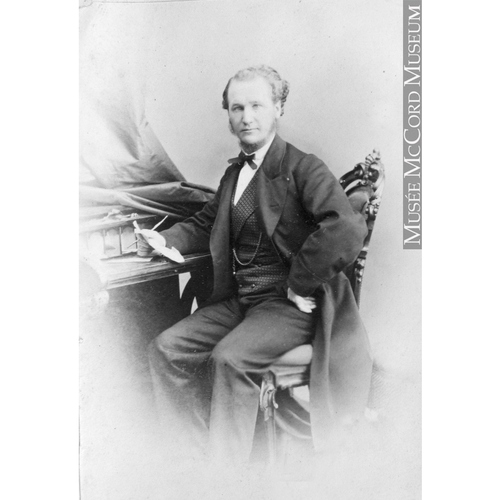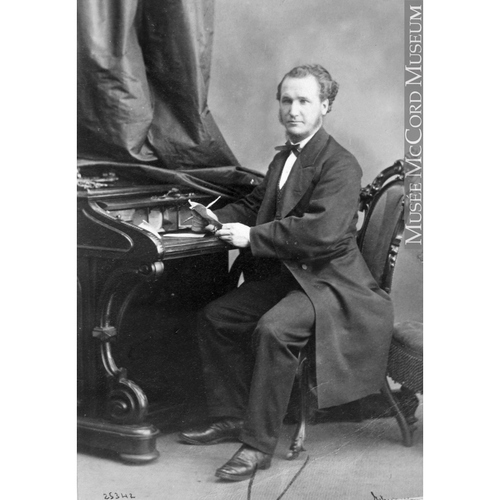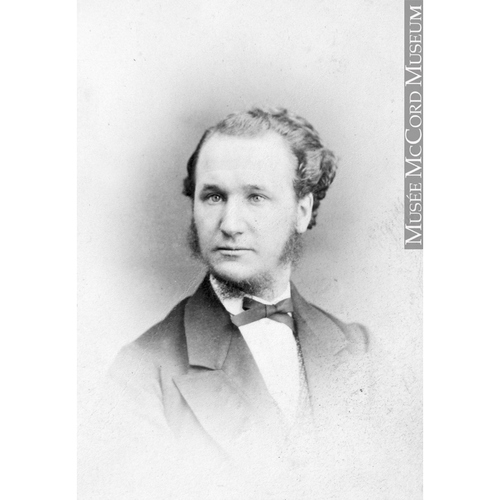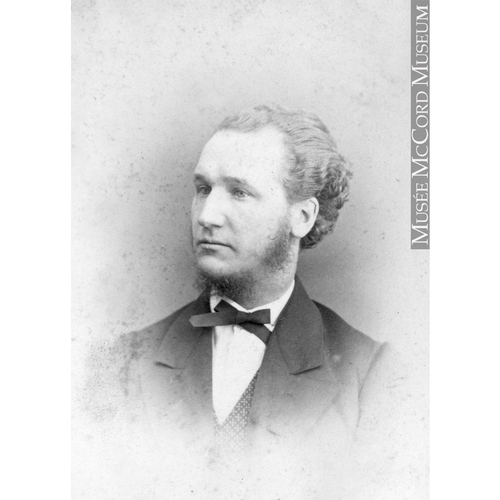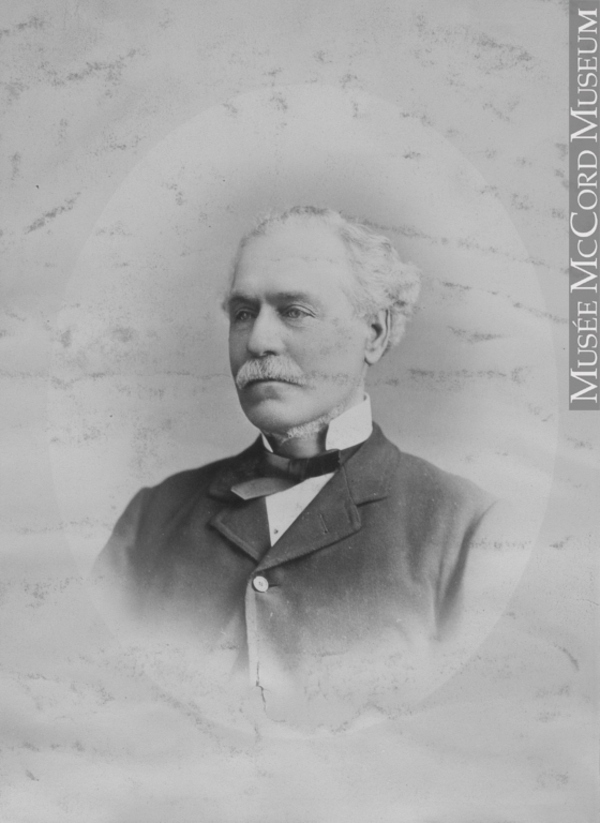
Source: Link
WILLIAMSON, JAMES, Presbyterian minister, educator, and astronomer; b. 19 Oct. 1806 in Edinburgh, son of William Williamson, a lawyer, and Ann Lothain; m. first in 1845 Margaret Gilchrist (d. 1847), and they had one son; m. secondly 19 Oct. 1852 Margaret Macdonald, a sister of John Alexander Macdonald, in Kingston, Upper Canada; d. there 26 Sept. 1895.
James Williamson attended the High School of Edinburgh from 1815 to 1819. In 1821, at an unusually early age, he entered the University of Edinburgh, where he was most attracted to the sciences. He was a competent but not a brilliant scholar in mathematics, and astronomy, which he studied with Walter Nichol and William Wallace. After graduating with an ma in 1827 he studied theology and worked as a tutor; among his pupils were members of the family of the exiled Charles X of France at the Palace of Holyroodhouse. Licensed to preach in the Church of Scotland in 1831, he accepted posts first at Kilsyth and then at Drumelzier. That year he also helped start the Presbyterian Review and Religious Journal (Edinburgh), which was to merge with the North British Review.
In the summer of 1842 Thomas Liddell*, appointed the previous year first principal of Queen’s College, at Kingston, Upper Canada, travelled to Scotland in search of a candidate for the professorship of mathematics and natural philosophy. Williamson was highly recommended to Liddell and was offered the position, which he accepted. He accompanied Liddell to Upper Canada in October. In the course of the next 53 years Williamson lectured on almost every subject taught in the faculties of arts and theology at Queen’s including mathematics, natural history, physics, astronomy, logic, Latin, Greek, and church history. For much of his first decade there he carried out all the instruction in arts with only one other person. He helped establish a medical school at Queen’s in 1854 [see John Robinson Dickson*] and taught chemistry in it from 1854 to 1858. He also served as secretary of the board of trustees of the college for some years before 1849. In 1855 he was a member of a committee which obtained subscriptions from the local population for an observatory at Kingston. Williamson directed the observatory (which Queen’s took over in 1861), appointed Nathan Fellowes Dupuis* observer in 1863, and was instrumental in obtaining an annual grant from the provincial and later the dominion government for maintaining it as part of a chain welded into what became the Meteorological Service of Canada in 1876. He applied for the principalship of Queen’s in succession to William Leitch* in 1864, but was passed over in favour of William Snodgrass*; in 1876 he was appointed vice-principal. When he resigned the chair of mathematics and natural philosophy in 1882 he retained the titles honorary professor of astronomy and director of the university observatory.
Williamson was a teacher who saw his task not so much as training future scientists as providing the scientific portion of a liberal education. He did not make a mark in the practice of science, but students he taught, such as Samuel Alfred Mitchell, or whom he encouraged, among them Dupuis, did so. None the less he undertook some work in astronomy, including determination of the latitude and longitude of Kingston, collection of meteorological data, and occasional astronomical observations such as viewing Donati’s comet in 1858. His last scientific effort was in preparing for observations at Kingston of the transit of Venus in 1882, which he and Dupuis carried out successfully in December.
Williamson was a keen amateur naturalist and a founding member of the Botanical Society of Canada in 1860 [see George Lawson]. His interest in the Canadian northwest and the Great Lakes resulted in lectures and the publication of a pamphlet in 1854. In 1855 he had been awarded an lld by the University of Glasgow. He was one of the founding members of the Royal Society of Canada in 1882. At Kingston he was a pillar of the Presbyterian Church, often substituting for others in the pulpit. He had been ordained in 1845 and in 1854 was elected moderator of the Presbyterian Church of Canada in connection with the Church of Scotland. To his students and colleagues he was known as “Billy” and as a warm, generous, absentminded, and kindly man who took a deep personal interest in the college and its students and who was a first-rate teacher.
After the death of his first wife Williamson sent their son, James Gilchrist, to Scotland to be raised by his maternal grandparents. Although Williamson provided funds for his upbringing, he had little contact with James and later could not persuade him to live in Canada. On his marriage to Margaret Macdonald, her mother and an invalid sister, Louisa, came to live with them. Margaret died in 1876, Louisa continued to live with Williamson until her own death in 1889. His relations with Sir John were cordial but formal. The last time he spoke in public was in 1891 to deliver a eulogy at Macdonald’s grave.
James Williamson’s modest contributions to astronomical literature include “Longitude of Kingston,” Canadian Journal: a Repertory of Industry, Science and Art (Toronto), 3 (1854–55): 83; “Donati’s comet,” Canadian Journal of Science, Literature and Art (Toronto), new ser., 3 (1858): 486–88; “Determination of the latitude of Kingston observatory, Canada,” Royal Astronomical Soc., Monthly Notices (London), 28 (1867–68): 12–13; and “Transit of Venus, Dec. 6th, 1882: report of observations of Kingston observatory,” RSC Trans., 1st ser., 1 (1882–83), sect.iii: 94–95. He is also the author of The inland seas of North America; and the natural and industrial productions of Canada, with the real foundations of its future prosperity (Kingston, [Ont.], 1854).
NA, MG 24, K24; MG 26, A. QUA, 2259. Presbyterian Church of Canada in connection with the Church of Scotland, Minutes of the synod (Toronto), 31 May 1854. R. V. R[ogers], “Professor James Williamson, LL.D.,” Queen’s Quarterly (Kingston), 3 (1895–96): 161–72. Queen’s College Journal (Kingston), 26 Nov. 1881. Queen’s University Journal, 2 Nov. 1895. Morgan, Bibliotheca canadensis. Hew Scott et al., Fasti ecclesiæ scoticanæ: the succession of ministers in the Church of Scotland from the Reformation (new ed., 9v. to date, Edinburgh, 1915– ), 8: 655. R. A. Jarrell, The cold light of dawn: a history of Canadian astronomy (Toronto, 1988). H. [M.] Neatby and F. W. Gibson, Queen’s University, ed. F. W. Gibson and Roger Graham (2v., Kingston and Montreal, 1978–83), 1. M. M. Thomson, The beginning of the long dash: a history of timekeeping in Canada (Toronto, 1978). R. A. Jarrell, “Origins of Canadian government astronomy,” Royal Astronomical Soc. of Canada, Journal (Toronto), 69 (1975), no.2: 77–85.
Cite This Article
Richard A. Jarrell, “WILLIAMSON, JAMES,” in Dictionary of Canadian Biography, vol. 12, University of Toronto/Université Laval, 2003–, accessed December 30, 2025, https://www.biographi.ca/en/bio/williamson_james_12E.html.
The citation above shows the format for footnotes and endnotes according to the Chicago manual of style (16th edition). Information to be used in other citation formats:
| Permalink: | https://www.biographi.ca/en/bio/williamson_james_12E.html |
| Author of Article: | Richard A. Jarrell |
| Title of Article: | WILLIAMSON, JAMES |
| Publication Name: | Dictionary of Canadian Biography, vol. 12 |
| Publisher: | University of Toronto/Université Laval |
| Year of publication: | 1990 |
| Year of revision: | 1990 |
| Access Date: | December 30, 2025 |


